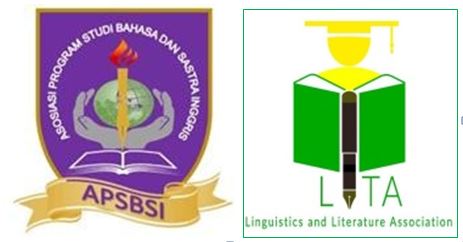Studying the Role of Positive Reinforcement for Motivation to Learn the English Language at Secondary Level in Pakistan
DOI:
https://doi.org/10.31849/utamax.v3i1.5899Keywords:
Motivation, Reinforcement, Classroom, Spotlighted, Lingua FrancaAbstract
English is being used all over the world as an international language. It is a Lingua Franca that enjoys a supreme status in society. Learners have to wrestle with new vocabulary, rules of grammar, pronunciation, and more. So, the current study explores the students’ motivation and the perceptions of English teachers about positive reinforcement in an English language classroom. Motivation and attitudes in learning a language in the classroom are very important and may make language courses more stimulating. The study contained a quantitative paradigm of control and experimental group as the research design. One hundred students and thirty teachers were selected using a simple random sampling technique. The data were collected using a close-ended self-developed questionnaire of 30 items with five main indicators subdivided into six indicators. The collected data was analysed in SPSS. The results demonstrated that Pakistani students were motivated in learning the English language and have shown a positive attitude towards using reinforcement in the classrooms. The study also spotlighted that if the motivation is used efficiently in the classroom, it will be a high-ranking tool for language learning. The recommendations and findings of this study should be taken into careful consideration, and steps should be taken to implement them in Pakistani English language classrooms.
References
Adara, R. A. (2018). Demotivating Factors of Indonesian College Students to Learn English as A Foreign Language. Sukma: Jurnal Pendidikan, 2(1), 1-24.
Ahmad, Z., & Mahmood, N. (2010). Effects of cooperative learning vs. traditional instruction on prospective teachers’ learning experience and achievement. Ankara Üniversitesi Eğitim Bilimleri Fakültesi Dergisi, 43(1), 151-164.
Bahramy, M., & Araghi, M. (2013). The identification of demotives in EFL university students. International Journal of Basic and Applied Science, 1(4), 840-845.
Cherry, K. (2021). Extrinsic Motivation. Retrieved on 24 Jan. 2021 from https://www. verywell mind .com/ what-is-extrinsic-motivation-2795164
Christie, T., & M. Afzaal (2005). Rote memorization as a sufficient explanation of secondary school examination achievement in Pakistan: An empirical investigation of a widespread assumption. A paper presented at an IAEA international conference entitled Assessment and the future schooling and learning held at Abuja, Nigeria September, 4-9.
Dörnyei, Z. (1998). Motivation in second and foreign language learning. Language teaching, 31(3), 117-135.
Dörnyei, Z., & Ushioda, E. (2013). Teaching and researching: Motivation.
Dowaliby, F., & Schumer, H. (1973). Teacher-centered versus student-centered mode of college classroom instruction as related to manifest anxiety. Journal of Educational Psychology, 64(2), 125.
Edelenbos, P., & Vinjé, M. P. (2000). The assessment of a foreign language at the end of primary (elementary) education. Language testing, 17(2), 144-162.
Evans, M., & Tragant, E. (2020). Demotivation and Dropout in Adult EFL Learners. TESL-EJ, 23(4), n4.
Henderlong, J., & Lepper, M. R. (2002). The effects of praise on children's intrinsic motivation: A review and synthesis. Psychological bulletin, 128(5), 774.
Iqbal, A. S. I. F. (2010). A Comparative Study of The Impact of Principals’ leadership Styles on The Job Satisfaction of Teachers. Doctoral dissertation. University of the Punjab Lahore.
Jiménez, R. M., & Rosa, M. (2010). Gender perspectives on vocabulary in foreign and second language. Palgrave Macmillan UK
Khaliq, A., Douna, M. S. R., & Ahsan, M. (2016). Role of Reinforcement or Punishment in Learning English Language: A Study at Secondary Level in Southern Punjab Pakistan. International Journal of Business and Social Science, 7(8), 137-146.
Kim, T. Y., Kim, Y., & Kim, J. Y. (2018). A Qualitative Inquiry on EFL Learning
Demotivation and Resilience: A Study of Primary and Secondary EFL Students in
South Korea. Asia-Pacific Education Researcher, 27(1), 55-64.
Krishnan, K. S. D., & Pathan, Z. H. (2013). Investigating demotivation in learning English: An extension to Sakai and Kikuchi’s (2009) framework. Advances in Language and Literary Studies, 4(2), 124-131.
Larasati, F. (2018). Student Centered Learning: An Approach to Develop Speaking Skill in EFL Classroom. English Community Journal, 2(1), 153-157.
Leonard, N. H., Beauvais, L. L., & Scholl, R. W. (1999). Work motivation: The incorporation of self-concept-based processes. Human relations, 52(8), 969-998.
Lin, J., & Wu, F. (2004). Differential Performance by Gender in Foreign Language Testing.
Llach, M. P. A., & Gallego, M. T. (2012). Vocabulary knowledge development and gender differences in a second language. Elia, 12(1), 45-75.
Lynn, R., Fergusson, D. M., & Horwood, L. J. (2005). Sex differences on the WISC-R in New Zealand. Personality and Individual Differences, 39(1), 103-114.
Meara, P., & Fitzpatrick, T. (2000). Lex30: An improved method of assessing productive vocabulary in an L2. System, 28(1), 19-30.
Ng, C. F., & Ng, P. K. (2015). A review of intrinsic and extrinsic motivations of ESL learners. International Journal of Languages, Literature and Linguistics, 1(2), 98-105.
Oroujlou, N., & Vahedi, M. (2011). Motivation, attitude, and language learning. Procedia-Social and Behavioral Sciences, 29, 994-1000.
Oxford, R., & Shearin, J. (1994). Language Learning Motivation: Expanding the theoretical framework. The modern language journal, 78(1), 12-28.
Pratiwi, M. A., Sudirman, S., & Adnyani, L. S. (2018). A Study of the Reinforcement Used By English Teacher in 6a Class at SD Lab Undiksha Singaraja. International Journal of Language and Literature, 2(3), 117-124.
Rachman, D., & Nur, D. R. (2017). The Relationship between English Teacher’s Praise and English Learning Achievement of The Tenth Grade of SMK Negeri 9 Samarinda. JELE (Journal of English Language and Education), 3(1), 54-62.
Sahana, 2012. Six Common Reasons for lack of motivation. Retrieved from: http://w.w.w.sysahana.org/2012/04/ Six-Common reasons-for-lack-of-motivation.
Scarcella, R., & Zimmerman, C. (1998). Academic Words and Gender: ESL Student Performance on a Test of Academic Lexicon. Studies in Second Language Acquisition, 20(1), 27-49. Retrieved February 18, 2021, from http://www.jstor.org/stable/44486382
Tanaka, M. (2017). Examining EFL vocabulary learning motivation in a demotivating learning environment. System, 65, 130-138.
Vibulphol, J. (2016). Students’ Motivation and Learning and Teachers’ Motivational
Strategies in English Classrooms in Thailand. English Language Teaching, 9(4), 64-75.










